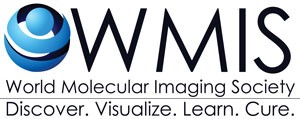October 11, 2013 — Molecular imaging has vast potential to improve healthcare in the coming years by allowing more directed, personalized therapy. But molecular imaging’s contribution may be limited until more imaging specialists are trained to interpret scans acquired with the new types of tracers being developed.
This conundrum is one of many challenges facing molecular medicine in a wide-ranging discussion of the technology between AuntMinnie.com and three molecular imaging experts during last month’s World Molecular Imaging Society (WMIS) annual meeting.
Education looms as perhaps the most significant issue that could hamper growth of the discipline, as the teachers of tomorrow are just now being trained themselves. This has limited the ability to create a specialized training track devoted exclusively to molecular imaging, according to Robert Gillies, PhD, vice chair of radiology and chairman of the department of cancer imaging and metabolism at the Moffitt Cancer Center in Tampa, FL.

Robert Gillies, PhD, from Moffitt Cancer Center.
“There really aren’t enough senior-level people to do a full-out establishment of a new track in radiology, but we see this as inevitable,” Gillies said.
While training and practice will become “more complex and will require greater knowledge of cellular and molecular pathology,” the process of getting would-be imaging specialists up to speed is already underway, Gillies said. He cited training programs at several leading institutions, such as Memorial Sloan-Kettering Cancer Center in New York City, which offers tracks for radiology residents and fellows in molecular imaging.
Many current and budding radiologists are already coming into the field with a background in cellular and molecular biology. “They have either their graduate or undergraduate degree in this discipline, or may be cross-trained in a PhD or MD program with a specific molecular focus,” Gillies said. “So, I think those are the people who are really going to impact this field.”
How future imaging clinicians are trained and certified in both molecular imaging and nuclear medicine is being actively discussed, added Dr. Anthony Shields, PhD, professor of oncology and medicine at Wayne State University and associate director for clinical sciences at the Karmanos Cancer Institute in Detroit.
“Nuclear medicine residents have always been trained in molecular imaging, including the biology and physics of imaging,” he said. “They will be learning about an expanding list of tracers to image different pathways.”
An imaging specialist with expertise in molecular imaging with several modalities would be a boon, Shields said. As an oncologist, it’s common for Shields to order a PET, CT, and/or MRI scan, depending a patient’s condition. “People who can look at all those [scans] and read them are certainly important to me, because we will need to have them know the benefits and limitations of each imaging modality,” he added.
Neurobiology and neuroscience are among the disciplines expected to benefit from molecular imaging, said James Basilion, PhD, professor of radiology, biomedical engineering, and pathology at Case Western Reserve University in Cleveland. He also sees molecular imaging making inroads in cardiovascular disease for identifying vulnerable plaque.

Dr. Anthony Shields, PhD, from Wayne State University.
While nuclear medicine and radiology are administratively aligned in many institutions, this is not always the case. Gillies anticipates there will be a move toward “closer interactions and mergers between radiology, nuclear medicine, and pathology into diagnostics divisions. The borders between disciplines will get fuzzier.”
While he believes PET and SPECT will continue as a subset of molecular imaging under the umbrella of nuclear medicine, the two modalities “increasingly will have closer ties to medical and radiation oncology, as companion diagnostics and theragnostics increase in use,” he said.
Companion diagnostics would include tests to determine which treatment would elicit the best response for a particular patient’s condition. Theragnostics combines therapeutics and diagnostics, with diagnostic tests that identify patients most likely to be helped or harmed by a new medication, along with targeted drug therapy based on the test results.
Hybrid imaging
Imaging technology is paralleling — and, to some degree, ahead of — the advance of molecular imaging. Several equipment manufacturers have taken it upon themselves to bring hybrid imaging modalities to radiology before there was a perceived need.
For example, in the past decade, PET/CT was developed without a specific clinical application to be addressed, and it has since become a mainstay in radiology departments around the world. Today, vendors are hoping for the same success with PET/MRI.
“One of the issues is that there has to be a market for the technology for vendors to keep up with the progress of molecular imaging,” Basilion said. “My take on it is that we will get there once we demonstrate its utility. The hard part of this is jumping that chasm.”
Gillies recalled that for several years vendors would ask him and his colleagues how PET/MRI could be used. “We still don’t understand the rationale [for PET/MRI], but we are happy that they have done it,” he said. “Their expectation was that with the instrumentation in place, new reimbursable applications would be developed, but they basically did this on faith. Now there are more and more installations of this technology, so it is not a failure. It will be a success.”
Drugs and imaging agents
The biggest concern moving forward is not instrumentation, but how imaging agents are utilized, if they can be proved beneficial, and if they can pass muster with the U.S. Food and Drug Administration (FDA). Then, there is the U.S. Centers for Medicare and Medicaid Services (CMS), which determines reimbursement coverage.

James Basilion, PhD, from Case Western Reserve University.
“Trying to get a new agent tested and FDA-approved and paid by CMS is really hard,” Basilion said. “Those [tests] are very, very hard just to perform, and trying to prove that an agent will change treatment … is extremely difficult.”
He cited CMS’ final decision last month that it would pay for only one PET beta-amyloid scan to exclude Alzheimer’s disease through the agency’s coverage with evidence development (CED) regulatory framework. Molecular imaging advocates believed there was more than enough evidence to confirm the efficacy of one beta-amyloid radiopharmaceutical, florbetapir (Amyvid, Eli Lilly), as an imaging agent.
Still, Shields said molecular imaging is already dramatically affecting how drugs are developed. Most pharmaceutical companies have preclinical imaging programs to screen drugs in animal models and use molecular imaging to see how they interact with subjects.
“They are getting more information in order to make ‘go’ or ‘no-go’ decisions with lead compounds earlier than they could without molecular imaging,” Shields said. “Even if it’s not translating as fast as they would like, it’s still having a dramatic impact on the drug pipeline and the ability to create efficacious cancer agents or other therapeutics.”
Navigating the ‘valley of death’
To improve the chances of drugs and contrast agents reaching clinical use, clearer guidance is needed from the FDA, the trio said.
“To the agency’s credit, it does have an ongoing effort to clarify guidelines for the approval of drugs, but you could almost bypass the FDA or CMS because in some cases insurance companies have reimbursed for agents that are not CMS reimbursable,” Gillies said.
As the landscape of healthcare changes, more insurers might play a more active role in the use of a particular drug or contrast agent, especially if it helps them save money, he said.
There is also what Gillies calls the “valley of death” for pharmaceutical companies with promising products, as they make the leap from preclinical research to human studies through an investigational new drug (IND) application.
“To take it to the next IND, there are estimates that the minimum investment can be as great as $9 million, whereas it is approximately $2 million to get to an emergency IND,” he said. “And, if guidelines do change, [companies] could spend all this money, get all the data you think you’ll need, and not get approved.”
Shields gave the example of how PET was perceived at one time as a very expensive modality. “The cost of a PET scan has gone down enormously in relative terms in the last 20 years, and the cost of the drugs I use has grown enormously the last 20 years,” he said.
It’s not uncommon for him to spend $10,000 to $20,000 per month on therapeutic drugs for patients, he noted, which now makes a PET scan look very inexpensive.
“If you can say this drug is not going to work, then you have just saved one month’s worth of drug and doubled, tripled, or quadrupled the money you have saved,” he said. “So I think it has become clear that the imaging technology we have can be a good deal, if it is used appropriately.”
This article is posted with the permission of AuntMinnie.com
